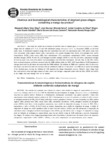Por favor, use este identificador para citar o enlazar este ítem:
http://www.alice.cnptia.embrapa.br/alice/handle/doc/658098Registro completo de metadatos
| Campo DC | Valor | Lengua/Idioma |
|---|---|---|
| dc.contributor.author | RÊGO, M. M. T. | pt_BR |
| dc.contributor.author | NEIVA, J. N. M. | pt_BR |
| dc.contributor.author | RÊGO, A. C. do | pt_BR |
| dc.contributor.author | CÂNDIDO, M. J. D. | pt_BR |
| dc.contributor.author | CARNEIRO, M. do S. de S. | pt_BR |
| dc.contributor.author | LOBO, R. N. B. | pt_BR |
| dc.date.accessioned | 2011-04-09T15:24:14Z | - |
| dc.date.available | 2011-04-09T15:24:14Z | - |
| dc.date.created | 2010-02-18 | pt_BR |
| dc.date.issued | 2010 | pt_BR |
| dc.identifier.citation | Revista Brasileira de Zootecnia, v. 39, n. 1, p. 81-87, 2010. | pt_BR |
| dc.identifier.uri | http://www.alice.cnptia.embrapa.br/alice/handle/doc/658098 | pt_BR |
| dc.description | This study was carried out to evaluate the nutritive value of elephant grass (Pennisetum purpureum, Schum.) silages with the addition of 0, 4, 8, 12 and 16% dehydrated mango (Mangifera indica, L.) by-product (DMB), on the fresh matter basis. A randomized complete design with four replications was used. As experimental silos, 210L plastic drums were used. Dry matter (DM), organic matter (OM), crude protein (CP), neutral detergent fiber (NDF), acid detergent fiber (ADF), hemicellulose (HCEL), ether extract (EE), total carbohydrates (TC), non-fibrous carbohydrates (NFC), neutral detergent insoluble nitrogen (NDIN, % total N), acid detergent insoluble nitrogen (ADIN, % total N), pH values, ammoniacal nitrogen (% total N), lactic acid, acetic acid, butyric acid and propionic acid levels were determined. The DM, OM, CP, EE, NFC, NDIN, lactic acid and propionic acid levels increased with the DMB addition while the NDF, ADF, hemicellulose, N-NH3/ammoniacal nitrogen levels and the pH values decreased with the DMB addition. The addition of DMB had a quadratic effect on the acetic and butyric acid levels but there was no effect with the addition of DMB on TC and ADIN. The DMB can be used at the ensiling of the elephant grass, because the addition of 8.6% improves the silages fermentative process. However, these silages have low crude protein levels and high contents of ether extract and nitrogen compounds mixed with the fiber (NDIN and ADIN) in the silages, that may damage their use by animals. | pt_BR |
| dc.language.iso | eng | eng |
| dc.rights | openAccess | eng |
| dc.title | Chemical and bromatological characteristics of elephant grass silages containing a mango by-product. | pt_BR |
| dc.type | Artigo de periódico | pt_BR |
| dc.date.updated | 2019-09-23T11:11:11Z | pt_BR |
| dc.subject.thesagro | Manga | pt_BR |
| dc.subject.thesagro | Fermentação | pt_BR |
| dc.subject.thesagro | Valor nutritivo | pt_BR |
| dc.subject.thesagro | Subproduto | pt_BR |
| dc.subject.thesagro | Mangifera Indica | pt_BR |
| dc.subject.thesagro | Pennisetum Purpureum | pt_BR |
| dc.subject.nalthesaurus | Fermentation | pt_BR |
| dc.subject.nalthesaurus | Animal byproducts | pt_BR |
| dc.subject.nalthesaurus | Nutritive value | pt_BR |
| riaa.ainfo.id | 658098 | pt_BR |
| riaa.ainfo.lastupdate | 2019-09-23 -03:00:00 | pt_BR |
| dc.contributor.institution | Margareth Maria Teles Rêgo, Pós-graduanda Universidade Federal do Ceará (UFC), Fortaleza.; José Neuman Miranda Neiva, Universidade Federal de Tocantins (UFT).; Aníbal Coutinho do Rêgo, Pós-graduando da Universidade Federal de Lavras.; Magno José Duarte Cândido, Universidade Federal do Ceará (UFC), Fortaleza.; Maria do Socorro de Sousa Carneiro, UFC; RAIMUNDO NONATO BRAGA LOBO, CNPC. | pt_BR |
| Aparece en las colecciones: | Artigo em periódico indexado (CNPC)  | |
Ficheros en este ítem:
| Fichero | Descripción | Tamaño | Formato | |
|---|---|---|---|---|
| APChemicalandbromatologicalcharacteristicsofelephantgrasssilages.pdf | 117,43 kB | Adobe PDF |  Visualizar/Abrir |









